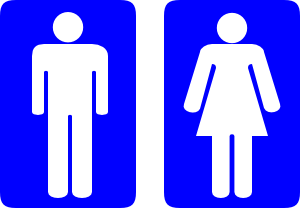“What’s the deal with all those songs in Bollywood?”
I’ve found that the most consistently misunderstood aspect of Bollywood (and, indeed, all popular Indian cinema) is the way lip-synced songs are used within the narrative of the film. American viewers in particular tend to find this an almost insurmountable obstacle to appreciating Bollywood films on their own merits. Why might Bollywood be ignored by the Western film community even as mass entertainment from places like China (kung fuand wuxia films) and Japan (anime) have been embraced?
I think the problem may lie in an association of Bollywood with Broadway-style American musicals and their sugar happy appropriate-for-all-ages content (due to heavy censorship during the heyday of the American musical). Bollywood films are not appropriate-for-all-ages. While they do have to pass through a Censor Board and explicit references to things like sex are going to be snipped if a film is to have an all-ages certificate, films can and do discuss a wide variety of serious issues using lip-synced songs. For example, the film Roti Kapada aur Makaan (Food, Clothes, and Shelter, 1974) is, among other things, a tough look at how the drive to stay out of poverty can lead a person to an immoral life. It has songs in which the actors lip sync and it also has a really disturbing rape scene and a bittersweet ending. Dil Se (From the Heart, 2000) is an intense film about terrorism. It has songs where the actors lip sync; it also has explosions and tough social commentary.
This clip from Dil Se, for example, shows how Amar is romanticizing the war zone he has been sent to cover as a reporter. We see his inner thoughts expressed through song in a way that couldn’t be easily duplicated in a Hollywood film (please forgive the advertisement):
So, Bollywood films are not all cheerful or what we might consider ‘family-friendly’ and the endings to the films are sometimes really unpleasant. Still, I still hear Western film buffs argue that lip-synced songs somehow make a film unrealistic. Let’s get one thing straight — the use of music in Western films is no more realistic than in Bollywood films.
Bollywood songs usually function like a soliloquy out of a Shakespeare play. The songs are designed to express a character’s inner feelings in a metaphorical way. A couple, for example, might be shown singing a duet in a lush meadow in Europe. Indian audiences implicitly understand that the couple has not actually been teleported to Switzerland or The Netherlands. The fantasy location and the song are designed to show how that first blush of love feels to the people involved. In another examples of a fantasy teleport song, in Kabhi Kushi Kabhie Gham (2001) you clearly see Rahul in a shop in India and then suddenly he and Anjali are cavorting around the pyramids in Egypt:
This, however, is no less realistic than your classic Hollywood movie song montage that features a couple falling in love using a series of different scenes set to “I Can’t Help Falling in Love With You.” Likewise, previously recorded songs used as part of a background score are an accepted convention in Western film. We don’t walk around hearing music matched to our mood in real life, but Westerners accept the fantasy in movies because it’s familiar.
Soundtracks and falling-in-love montages do not happen in real life but we have learned to ignore the artifice of the tools to appreciate the stories told. The only difference between those things and Bollywood songs is that is that Western viewers have no experience with the Bollywood song form.
———————————
About 15 years ago, a friend gave Filmi Girl a cassette tape with the soundtrack from the 1980s hit Bollywood film Maine Pyaar Kiye and she was hooked. A few years later, she began watching the films the songs were centered around, and after realizing that her real life friends were uninterested in hearing her gush about Aamir, Preity and Rani, she started a blog. The 31-year-old librarian now spends her limited free time reading about her latest interest and watching large amounts of deliciously, over-the-top Indian films. Read more Bollywood for Beginner posts at Filmi Girl.
If you would like to write a post for Sociological Images, please see our Guidelines for Guest Bloggers.











